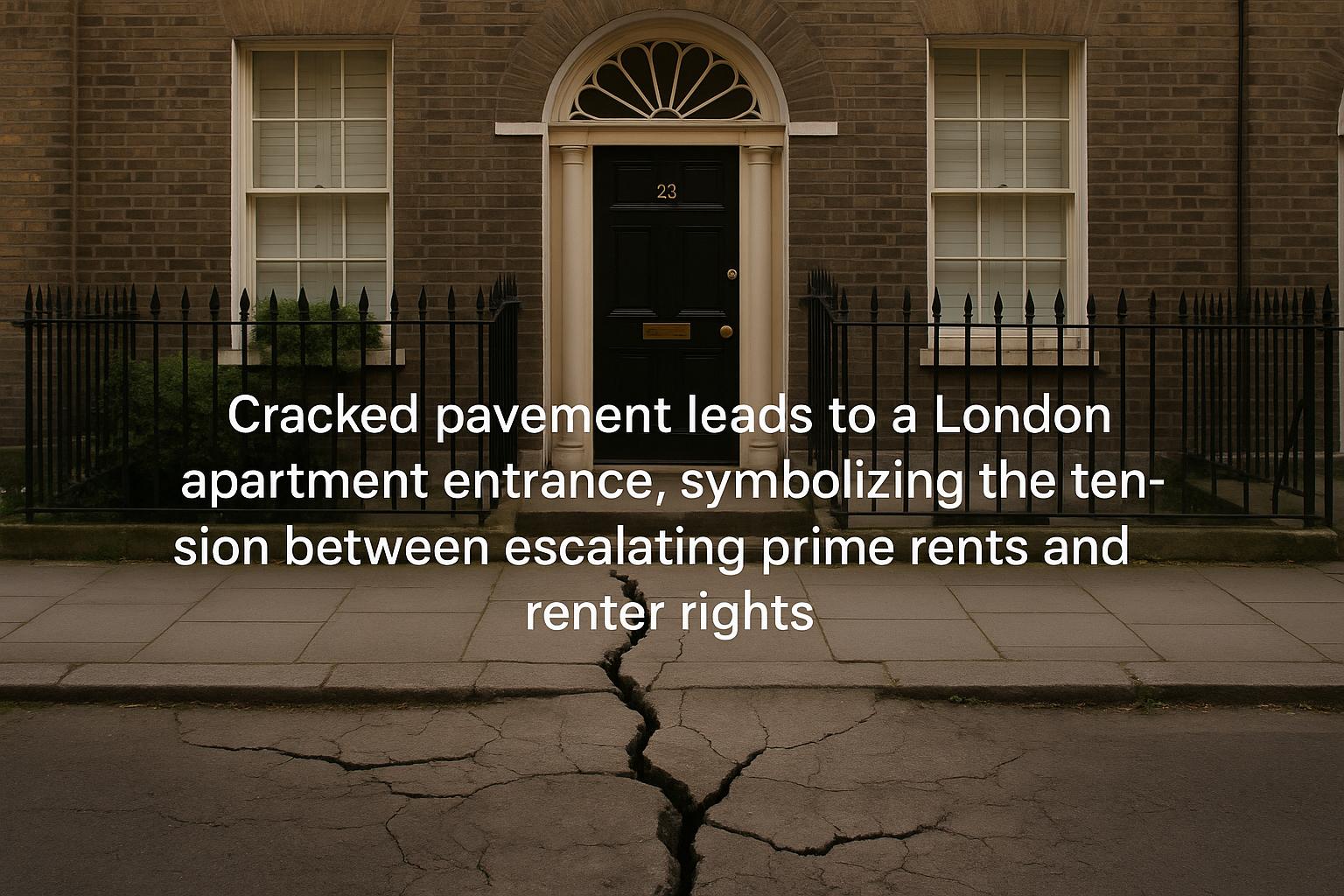Prime rental values across the UK have continued to grow in recent months despite the looming introduction of the Renters’ Rights Bill, according to the latest data from Savills. The Savills prime index reveals that Prime Central London experienced its strongest quarterly rental growth since mid-2023, with values rising by 0.7% in the third quarter of 2025 and an annual growth of 0.8%. Outer prime London markets and prime regional locations also saw gains, albeit more modest, with annual increases of 2.4% and 1.1% respectively.
The Renters’ Rights Bill, which has been under discussion for over two years and is now in the final stages of parliamentary scrutiny, aims to overhaul the UK lettings landscape by abolishing Assured Shorthold Tenancies in favour of open-ended periodic agreements. This shift is designed to provide tenants with greater security, allowing them to stay indefinitely with a two-month notice period, while landlords can seek possession only after four months. Rent increases would be regulated, requiring landlords to issue annual Section 13 notices subject to tenant challenge, and non-compliance could trigger fines up to £40,000 for repeat offences.
Despite concerns around these regulatory changes reshaping letting market dynamics, early market reactions appear limited. Savills reports that of tenancies ending in 2024 and 2025, just 6% of landlords cited the Bill as a reason to exit the market. Moreover, only 29% of Savills agents surveyed identified new regulation as the main concern for landlords. However, the legislation’s full impact may only materialise once it becomes law, with landlords potentially reevaluating their positions. This reassessment may be tempered by a weak property sales market, limiting landlords’ ability to sell and exit the rental sector as easily as they might wish.
Landlord and tenant expectations diverge notably in some prime rental markets. In outer prime London and prime regional areas, a significant majority of tenants anticipate rental falls—73% in prime regions and 63% in outer London—reflecting concerns about affordability and market shifts. Conversely, landlords remain bullish, with 88% in outer London and 47% in prime regional locations expecting rental growth or stability. This optimism may drive landlords to hold or raise asking rents to preserve demand, particularly seeking reliable tenants amid evolving tenancy terms.
Regional towns and cities are leading rental growth, with Savills recording a 1.9% quarterly increase, notably driven by international student demand returning strongly. Birmingham saw rents rise by 3.5% and Manchester by 1.6%. Flats continue to outperform houses across prime markets, with flat rents in Prime Central London rising by 1.1% compared to just 0.2% for houses. This trend reflects tenant preference for locations offering access to jobs and amenities.
Gross rental yields have also improved across London’s prime lettings market, particularly for flats. In West London and North and East London, average yields on flats have risen above 5%, representing a significant uplift relative to recent years. This yield enhancement may attract and retain landlord investment despite the regulatory uncertainties.
Other industry observations support the view that while the Renters’ Rights Bill introduces significant changes, it has yet to cause major disruption. Rightmove notes that the lettings market remains robust with increased buy-to-let mortgage lending, indicating sustained investor interest and supply. The flatshare sector, as reported by SpareRoom, shows an expanding supply and stable landlord participation despite the bill’s challenges.
However, some data highlights emerging pressures that could reshape the landlord landscape more substantially. Research from Together indicates smaller landlords, in particular, may be pushed out of the market due to a combination of new regulations, tax burdens, and rising costs. Approximately 12% of buy-to-let landlords plan to sell properties this year, with 11% intending to leave the market entirely. While only 8% cite the Renters’ Rights Bill explicitly, its cumulative effect alongside other factors is notable.
Institutional landlords face additional challenges, as highlighted by Cushman & Wakefield. The Bill’s shift to open-ended tenancies and increased tenant rights may lead to higher operational costs and valuation risks, potentially prompting portfolio adjustments and contributing to housing supply concerns. Combined with existing tax policies, these pressures could result in a net reduction of about 5% in the private rented sector.
In summary, while prime rental markets in London and key regional centres have shown resilience with solid rental growth and improving yields, the Renters’ Rights Bill is poised to bring significant changes to the UK lettings sector. Landlords and tenants are currently navigating a period of uncertainty, with market activity remaining buoyant but some landlords, particularly smaller ones, starting to reassess their commitment to the sector. The full impact of the legislation will become clearer once it is enacted and market participants adapt to the new regulatory environment.
📌 Reference Map:
- Paragraph 1 – [1], [4]
- Paragraph 2 – [2], [4]
- Paragraph 3 – [1], [4]
- Paragraph 4 – [1]
- Paragraph 5 – [1]
- Paragraph 6 – [1]
- Paragraph 7 – [5], [6]
- Paragraph 8 – [7], [4]
- Paragraph 9 – [1], [4], [7]
Source: Noah Wire Services
